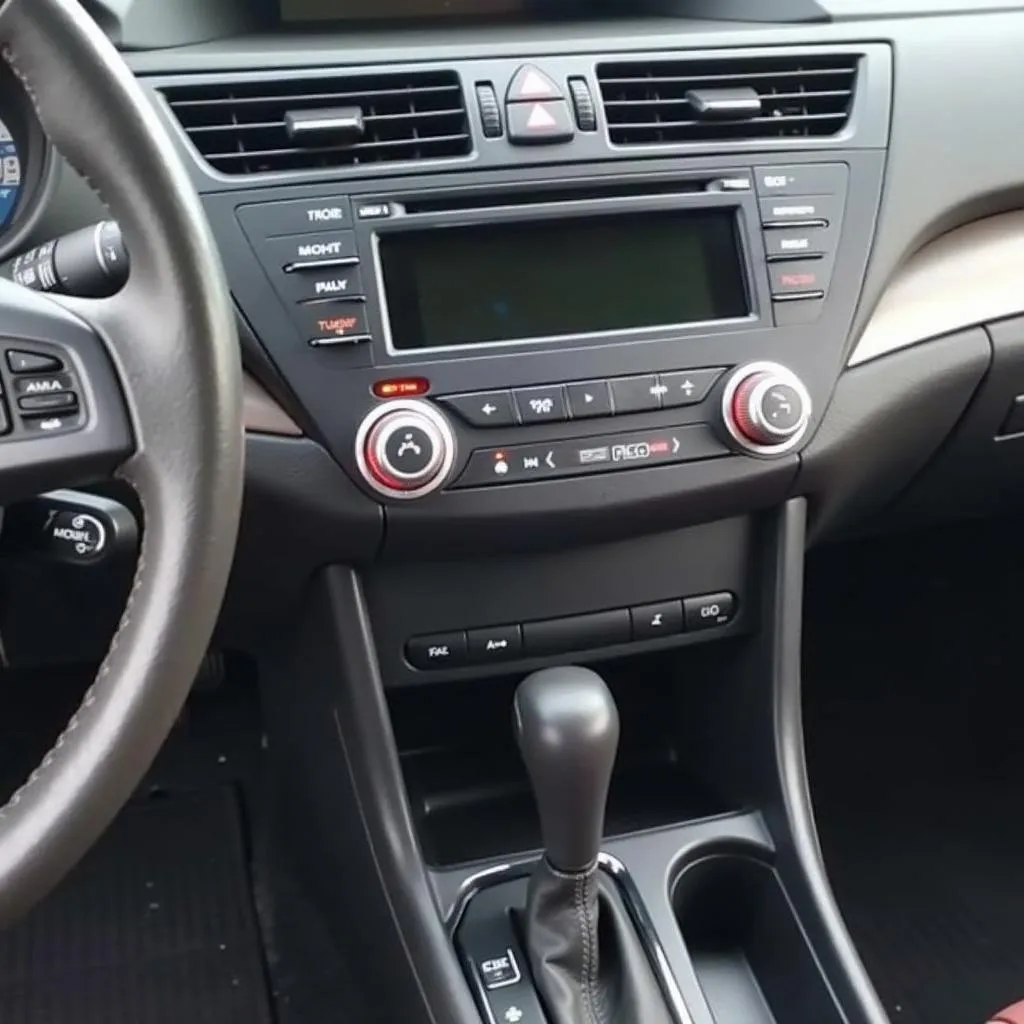The OBD2 port on your Honda Accord is your gateway to understanding your car’s health. Whether you’re a seasoned mechanic or a car enthusiast, knowing its location and how to use it can be incredibly beneficial.
What is an OBD2 Port and Why Is It Important?
OBD stands for On-Board Diagnostics. It’s a standardized system that allows external electronics to interface with your car’s computer system, primarily for diagnostics and troubleshooting. The OBD2 port is a 16-pin connector found in all cars manufactured after 1996.
This port allows you to:
- Read and clear Diagnostic Trouble Codes (DTCs): DTCs are like your car’s way of telling you something is wrong.
- Monitor live data: This includes engine RPM, speed, coolant temperature, and more.
- Perform emissions testing: This ensures your car meets environmental regulations.
Locating the OBD2 Port in Your Honda Accord
In most Honda Accord models, the OBD2 port is located on the driver’s side, under the dashboard, usually above the pedals. It’s a trapezoidal-shaped connector, often covered by a plastic cap.
However, the exact location might vary slightly depending on the model year. Here are some general guidelines:
- 1996-2007 Models: Look for the port under the dashboard, near the steering column or the fuse box.
- 2008-Present Models: The OBD2 port is typically located above the driver’s side footwell, near the hood release lever.
If you’re having trouble finding it, consult your owner’s manual for the precise location.
Common Uses for the Honda Accord OBD2 Port
- DIY Diagnostics: With an affordable OBD2 scanner, you can read and clear basic DTCs, giving you a head start on troubleshooting car problems yourself.
- Performance Monitoring: Car enthusiasts can use the OBD2 port to monitor live engine data, analyze performance, and make adjustments for better fuel efficiency or power.
- Emissions Testing: In many states, emissions testing is mandatory. Mechanics use the OBD2 port to check your car’s emissions levels.
- Insurance Telematics: Some insurance companies offer discounts for installing devices that plug into the OBD2 port and track driving habits.
Choosing the Right OBD2 Scanner for Your Honda Accord
There are numerous OBD2 scanners on the market, from basic code readers to advanced professional tools. The right one for you depends on your needs and budget.
- Basic Code Readers: These affordable scanners read and clear DTCs. Ideal for DIY enthusiasts.
- Bluetooth Scanners: These connect to your smartphone or tablet, providing a more user-friendly interface and advanced features like live data monitoring.
- Professional Scanners: These high-end scanners offer comprehensive diagnostics, coding capabilities, and advanced features for experienced mechanics.
Remember, the cheapest option isn’t always the best. Investing in a quality scanner can save you money and headaches in the long run.
Tips for Using the OBD2 Port Safely
- Always turn off your car’s ignition before plugging or unplugging anything from the OBD2 port.
- Avoid using cheap or counterfeit OBD2 scanners, as they can damage your car’s electrical system.
- Be cautious about downloading firmware updates for your scanner from untrusted sources.
- If you encounter any issues or error codes you don’t understand, consult a qualified mechanic.
Honda Accord OBD2 Port: Your Gateway to Car Health
Understanding your car’s OBD2 port empowers you to take control of its maintenance and performance. Whether you’re troubleshooting a check engine light or simply want to monitor your car’s vital signs, the OBD2 port is an indispensable tool for any Honda Accord owner.
For more information on specific Honda Accord model years, check out our dedicated articles:
Looking to enhance your Honda’s performance? Read our review of the GTE Stage 1 performance chip module OBD2 for Honda review.
Need help passing emissions? We’ve got you covered with our guide on How to pass inspection OBD2 turbo Honda tech.


